Muscles of the Lumbar Spine
This blog post article is an overview of the muscles of the lumbar spine of the trunk. For more complete coverage of the structure and function of the low back and pelvis, The Muscular System Manual – The Skeletal Muscles of the Human Body, 4th ed. (2017, Elsevier) should be consulted.
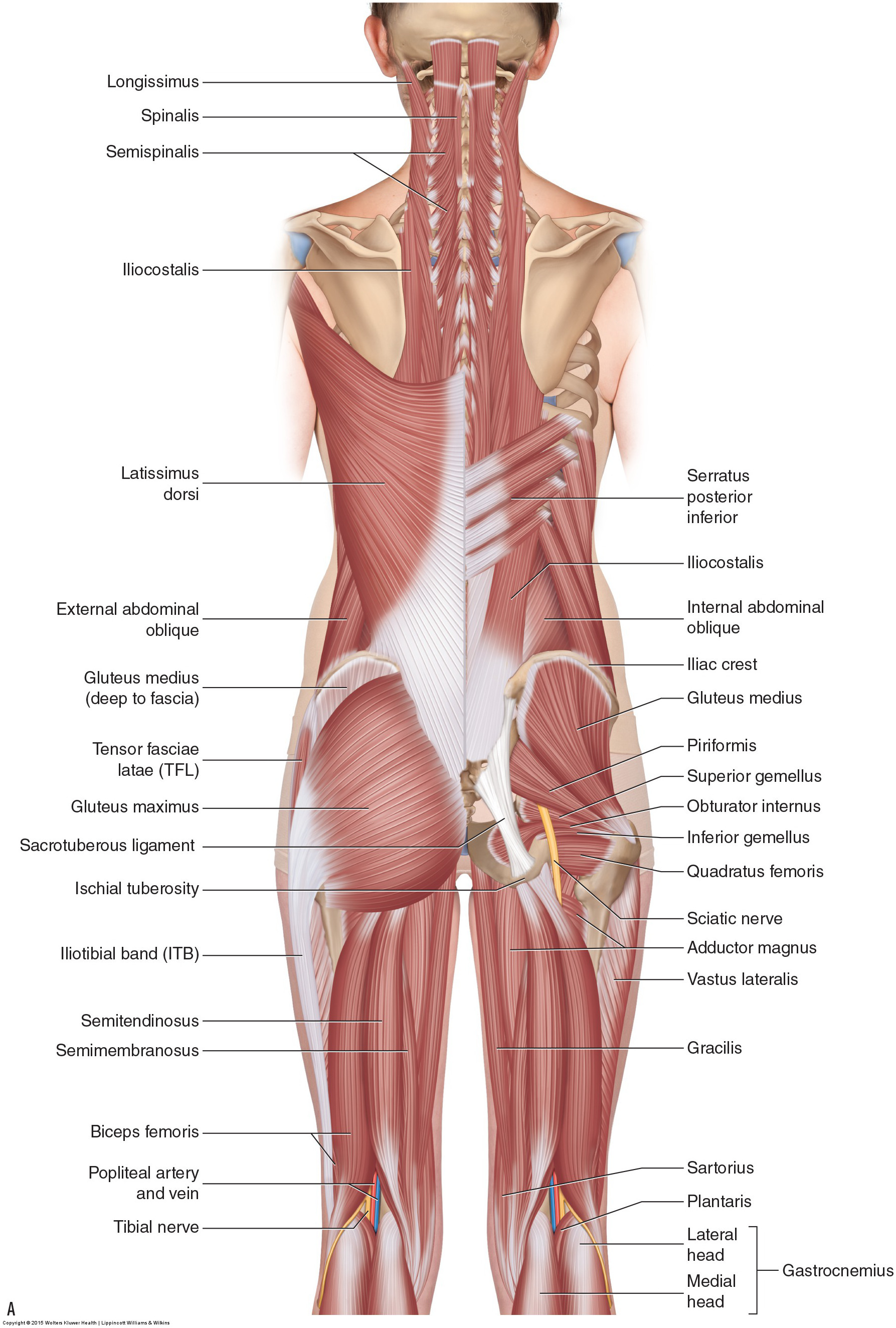
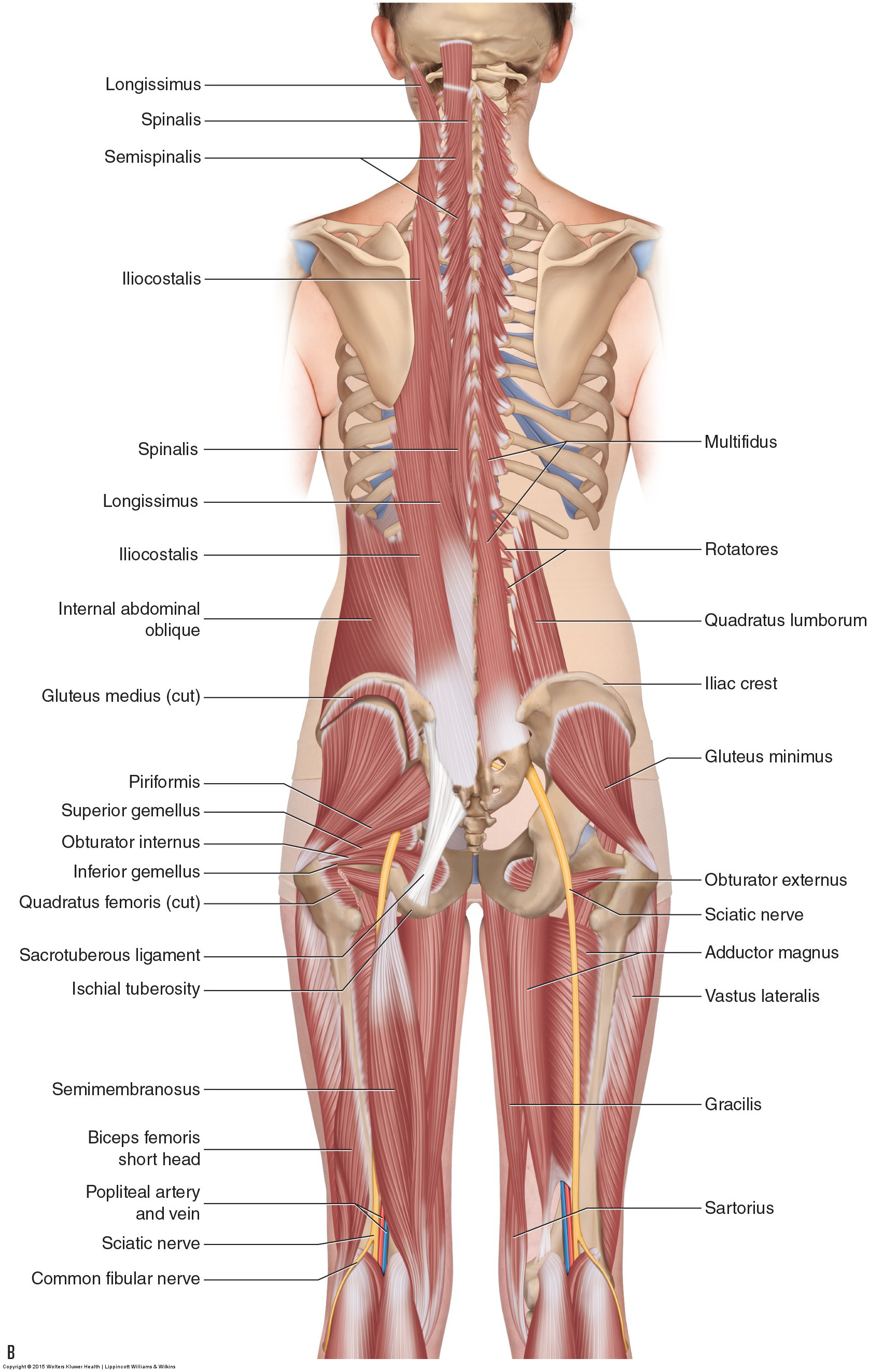
To perform clinical clinical orthopedic manual therapy to the lumbar spine that is accurate and specific, the therapist needs to know the attachments and actions of the muscles of the region. For example, to know where to place the palpating hand when applying deep tissue work into the low back and pelvis, the manual therapist must know the attachments of the target muscle to be worked to be able to locate the target muscle accurately.
(Note: Click here for an article on strains and sprains of the low back.)
(Note: Click here for an article on Spasmed Muscles of the low back.)
Furthermore, the therapist needs to know the mover actions of the muscles of the lumbar spine. Knowing the mover actions allows the therapist to ask the client to contract and engage the target muscle so that it palpably hardens. This hardening helps to distinguish the target muscle from the adjacent soft tissues, thereby alerting the therapist to its exact position and depth. Knowing a target muscle’s mover actions is also important when stretching the client, regardless of the stretching technique that is employed. Stretching a muscle is accomplished by lengthening it, which involves doing the opposite of the muscle’s mover actions. For example, if the target muscle is a trunk extensor, it is stretched by flexing the client’s trunk; if the target muscle is an anterior tilter of the pelvis, it is stretched by posteriorly tilting the client’s pelvis, and so on.
Before memorizing the detailed actions of each muscle of the lumbar spine, it is helpful first to visualize each muscle within its larger structural and functional groups. Figures 16 through 18 display the muscles of the trunk and pelvis.
Figure 16. Posterior view of the musculature of the low back (lumbar spine) and pelvis region. (A) Superficial view on the left with an intermediate view on the right. (B) Deeper set of views. Courtesy Joseph E. Muscolino. Manual Therapy for the Low Back and Pelvis – A Clinical Orthopedic Approach (2015).
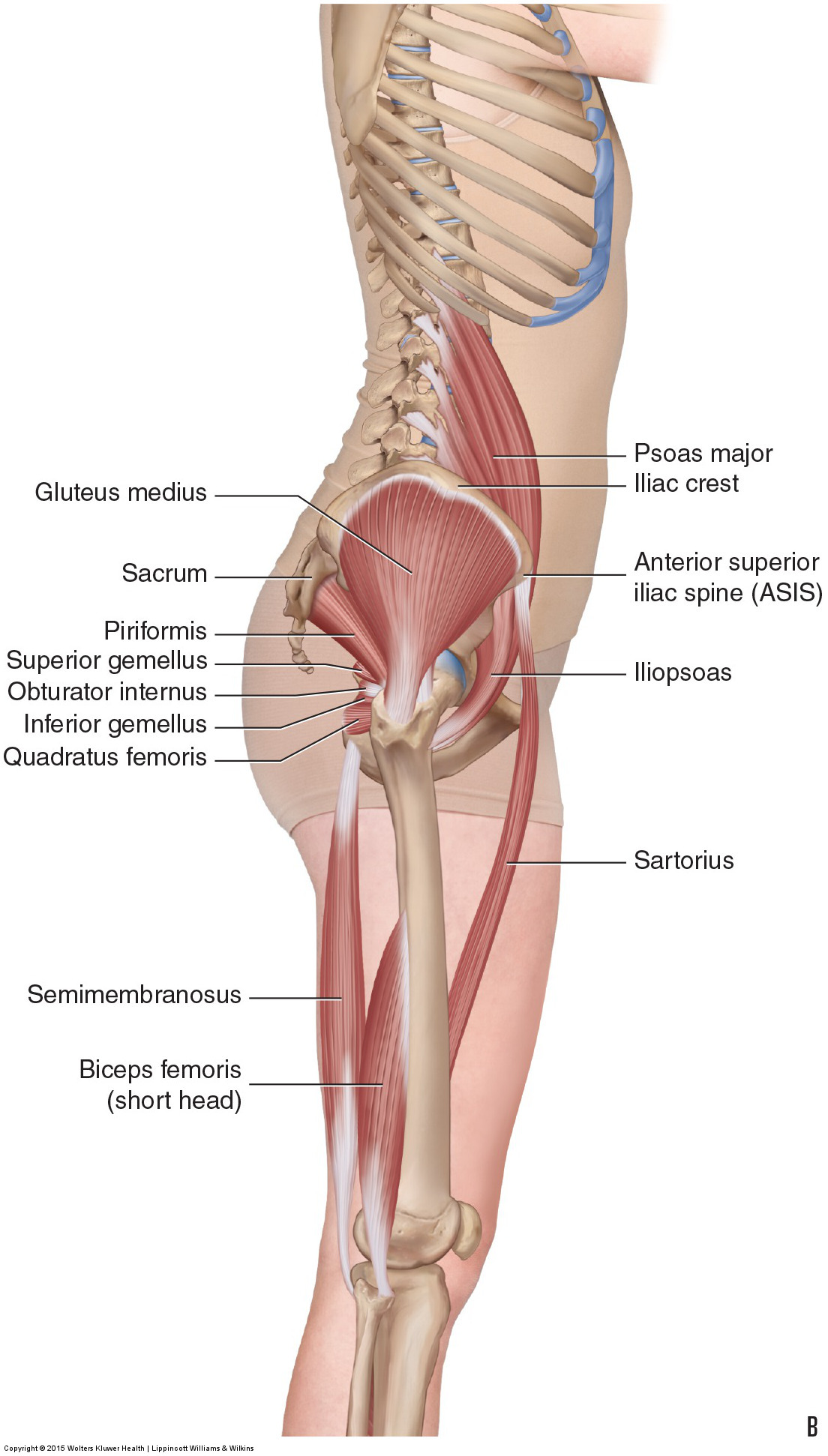
Figure 17. Right lateral views of the musculature of the low back (lumbar spine) and pelvis region. (A) Superficial view. Deeper view. Courtesy Joseph E. Muscolino. Manual Therapy for the Low Back and Pelvis – A Clinical Orthopedic Approach (2015).
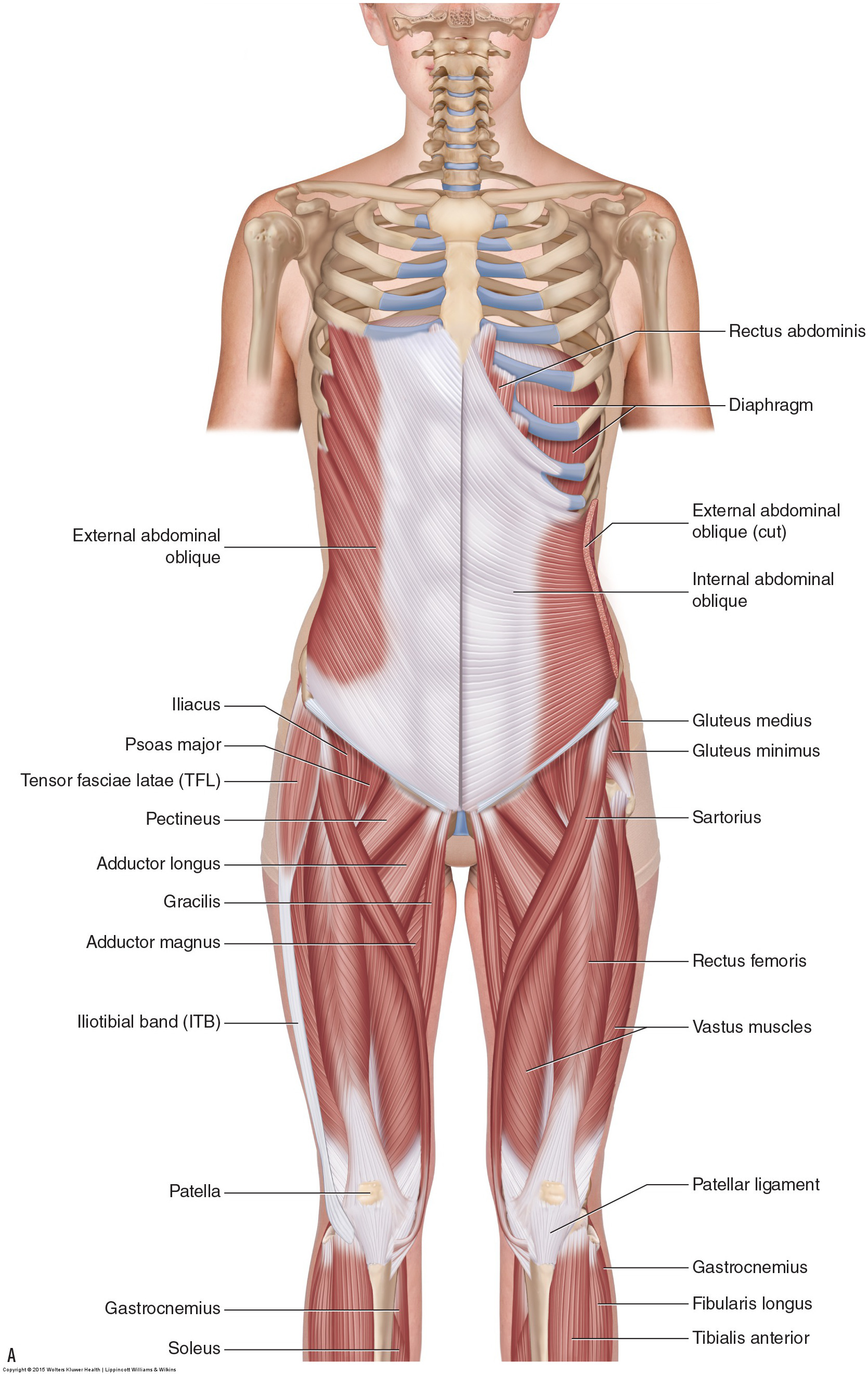
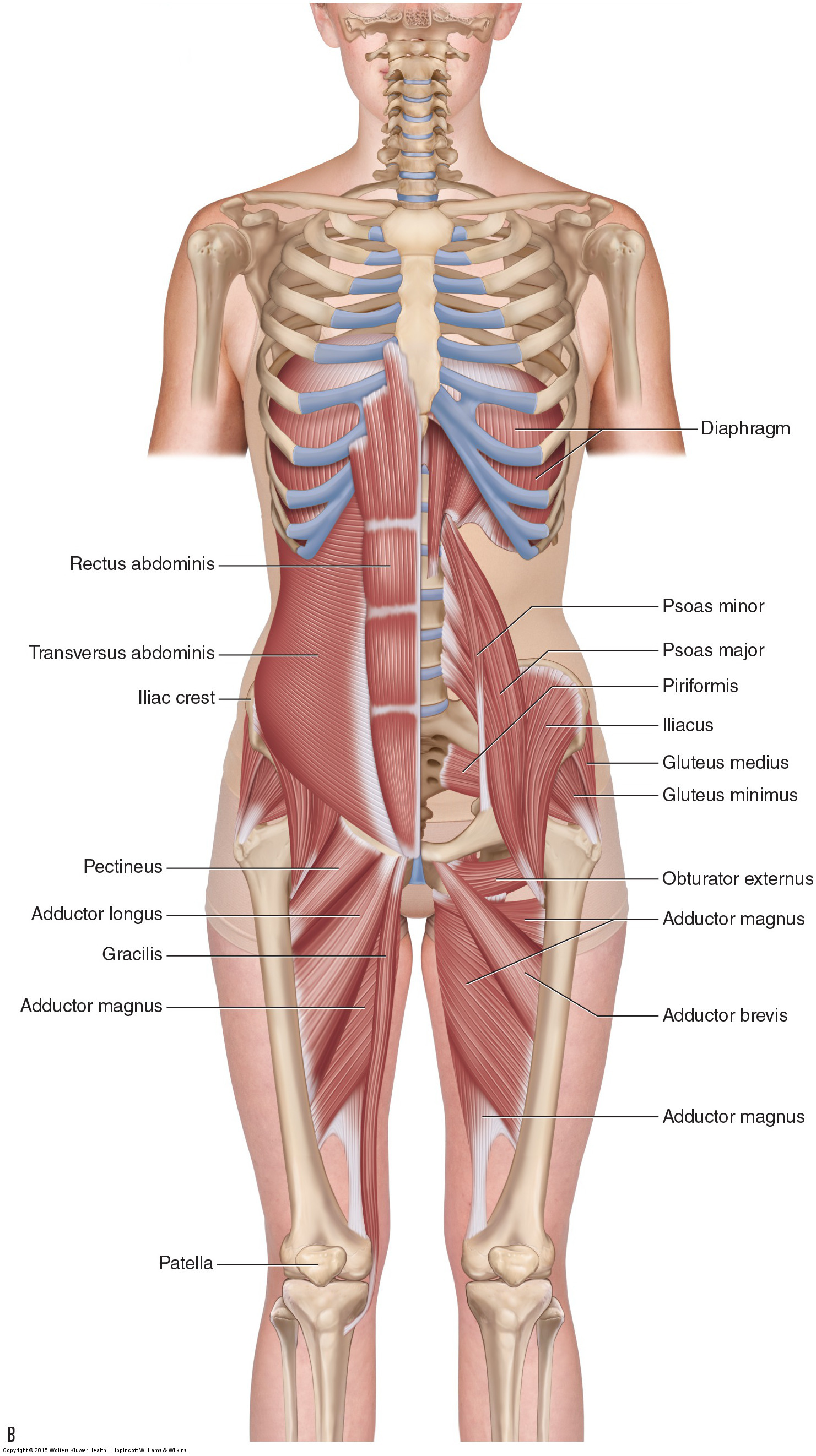
Figure 18. Anterior views of the musculature of the low back (lumbar spine) and pelvis region. (A) Superficial view on the right with an intermediate view on the left. (B) Deeper set of views. Courtesy Joseph E. Muscolino. Manual Therapy for the Low Back and Pelvis – A Clinical Orthopedic Approach (2015).
Muscles of the Lumbar Spine / Trunk
The muscles of the lumbar spine/trunk can be divided into posterior and anterior groups. Although this division is not perfect (e.g., the external and internal abdominal oblique muscles of the anterior abdominal wall attach all the way around to the posterior abdominal wall), it is a good beginning framework. It is also helpful to view the muscles as being located either on the right side or the left side of the trunk.
Therefore, for our purposes, the trunk muscles may be divided into four major structural groups, each in its own quadrant:
- Anterior right side
- Anterior left side
- Posterior right side
- Posterior left side
Viewing the muscles as part of these larger structural groups enhances the therapist’s understanding of the functional groups of muscle movers. This is so because structural groups largely determine functional groups—that is, the structural location of a muscle largely determines its mover function of the trunk. There are six major functional groups of muscles of the trunk: flexors and extensors in the sagittal plane, right lateral flexors and left lateral flexors in the frontal plane, and right rotators and left rotators in the transverse plane (alternatively, their reverse pelvic actions could be named and considered instead; see Table 3 of blog post article on Motions of the Joints of the Pelvis).
Knowing the structural location of a muscle helps make it possible to understand its action and place it into its functional group for standard (open chain) and reverse (close chain) actions without having to memorize this information. For example, all muscles that cross the spinal joints anteriorly are flexors of the trunk at the spinal joints and posterior tilters of the pelvis at the lumbosacral joint. Similarly, all muscles that cross the spinal joints posteriorly are extensors of the trunk at the spinal joints and anterior tilters of the pelvis at the lumbosacral joint. Whether anterior or posterior, if the muscle is located to the right side of the trunk, it can right laterally flex the trunk at the spinal joints and elevate the pelvis on the right side (and consequently depress the pelvis on the left side). Similarly, muscles on the left side can left laterally flex the trunk and elevate the left side of the pelvis (and consequently depress the right side of the pelvis).
It is also important to know the rotation action of the target muscle when treating it. The rotation component of a muscle’s actions is more challenging to visualize immediately because it is less dependent on the muscle’s structural location, as noted in the previous paragraph. As with all muscles, the direction of the muscle’s line of pull determines the muscle’s action, and the direction of the muscle’s fibers essentially determines the line of pull. Muscles that perform flexion, extension, right lateral flexion, and/or left lateral flexion must have a vertical component to their fiber direction. Muscles that perform right or left rotation must have a horizontal component to their fiber direction; in fact, it can be helpful to view them as partially “wrapping” horizontally around the trunk. Thus, considering the fiber direction of a trunk muscle is important when determining its rotational ability.
These six major functional groups of the lumbar spine are not mutually exclusive. A muscle can be a member of more than one functional group. For example, the right external abdominal oblique can flex, right laterally flex, and left (contralaterally) rotate the trunk at the spinal joints. Knowledge of the functional group actions of musculature is critically important when learning to perform multiplane stretching.
Figures 19 through 29 illustrate the individual muscles and muscle groups of the lumbar spine / trunk along with their specific attachment and action information.
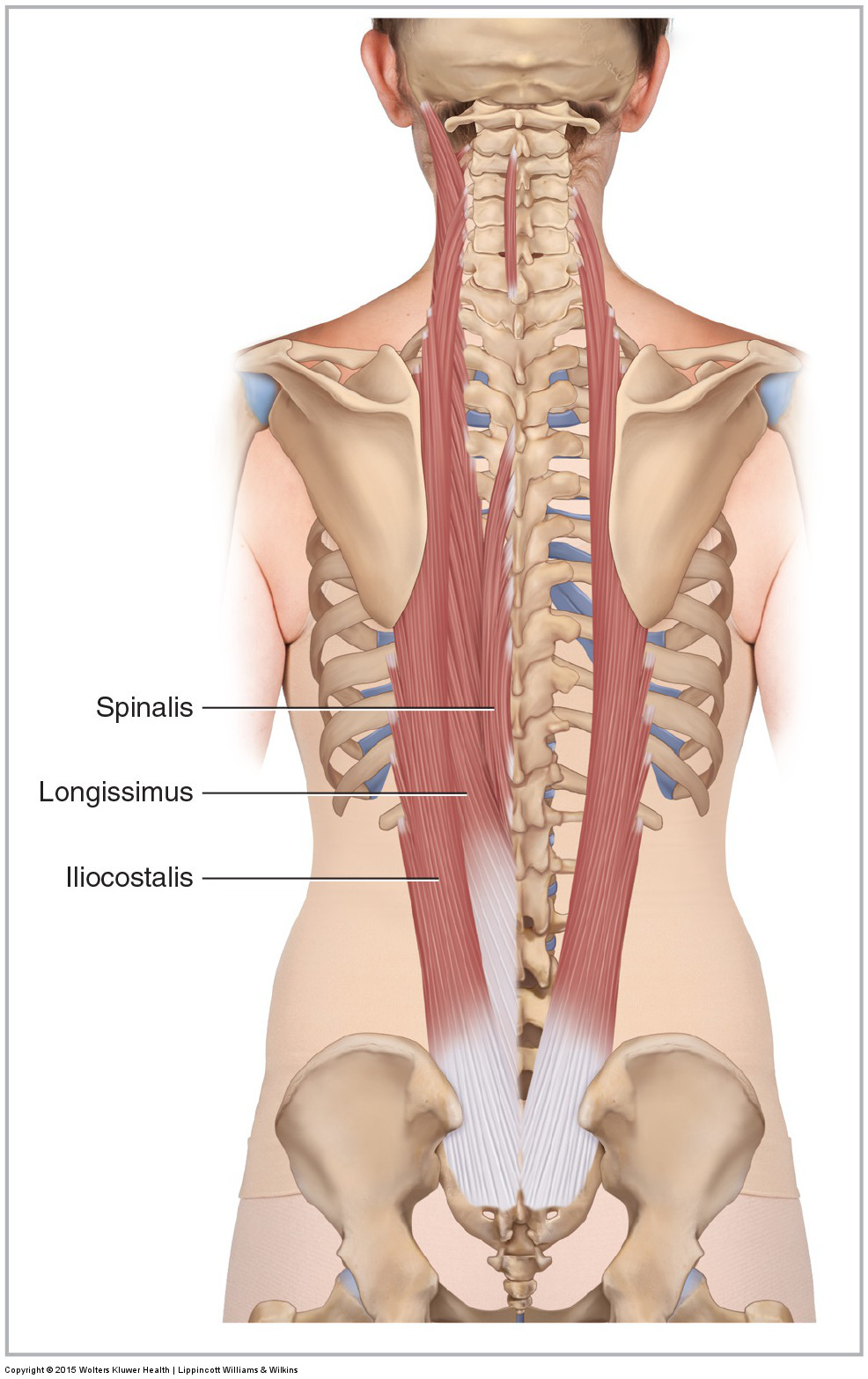
Figure 19. Posterior view of the erector spinae musculature of the low back. The erector spinae is composed of three subgroups: iliocostalis, longissimus, and spinalis. All three subgroups are shown on the left side; only the iliocostalis is shown on the right side. Courtesy Joseph E. Muscolino. Manual Therapy for the Low Back and Pelvis – A Clinical Orthopedic Approach (2015).
- The erector spinae in the trunk and pelvis attaches from the sacrum, medial iliac crest, vertebral transverse and spinous processes, and angles of ribs to angles of ribs and transverse and spinous processes of vertebrae above.
- As a group, the erector spinae extends, laterally flexes, and ipsilaterally rotates the trunk at the spinal joints. It also anteriorly tilts and contralaterally rotates the pelvis and elevates the same-side pelvis at the lumbosacral joint.
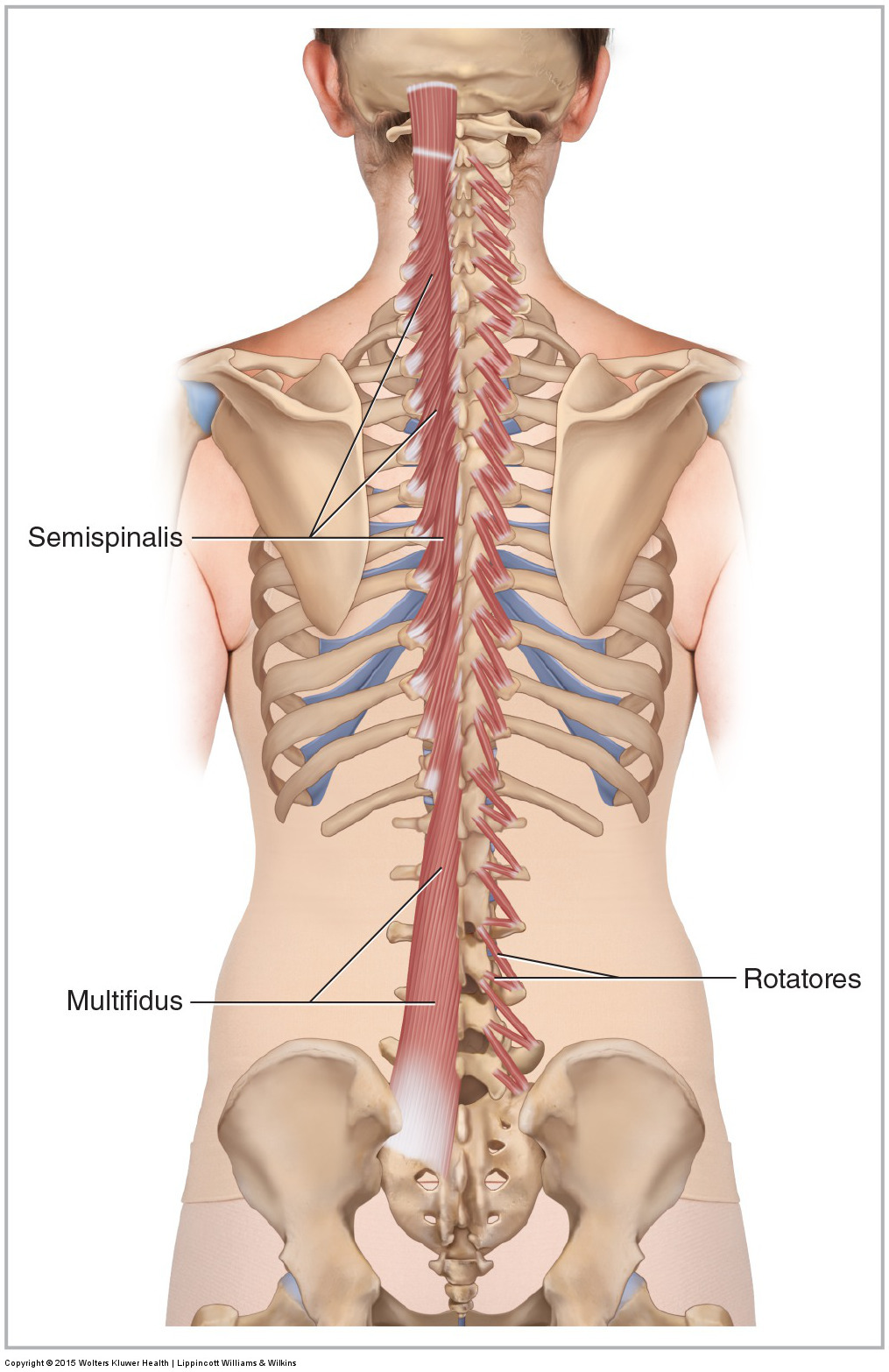
Figure 20. Posterior view of the transversospinalis musculature. The transversospinalis is composed of three groups: semispinalis, multifidus, and rotatores (the semispinalis does not attach into the lumbar spine). The multifidus and semispinalis are shown on the left side, and the rotatores are shown on the right side. Note: The multifidus is the largest muscle of the lumbar spine. Courtesy Joseph E. Muscolino. Manual Therapy for the Low Back and Pelvis – A Clinical Orthopedic Approach (2015).
- The multifidus and rotatores of the transversospinalis group in the trunk lie within the laminar groove of the lumbar and thoracic spine. The multifidus attaches from the sacrum and PSIS and the mammillary processes of the lumbar spine and transverse processes of the thoracic spine to the spinous processes of vertebral segments three to four levels superior to the inferior attachment. The rotatores attach from transverse processes of the lumbar and thoracic spine to vertebral segments one to two levels superior to the inferior attachment.
- As a group, the transversospinalis extends, laterally flexes, and contralaterally rotates the trunk at the spinal joints. It also anteriorly tilts and ipsilaterally rotates the pelvis and elevates the same-side pelvis at the lumbosacral joint.
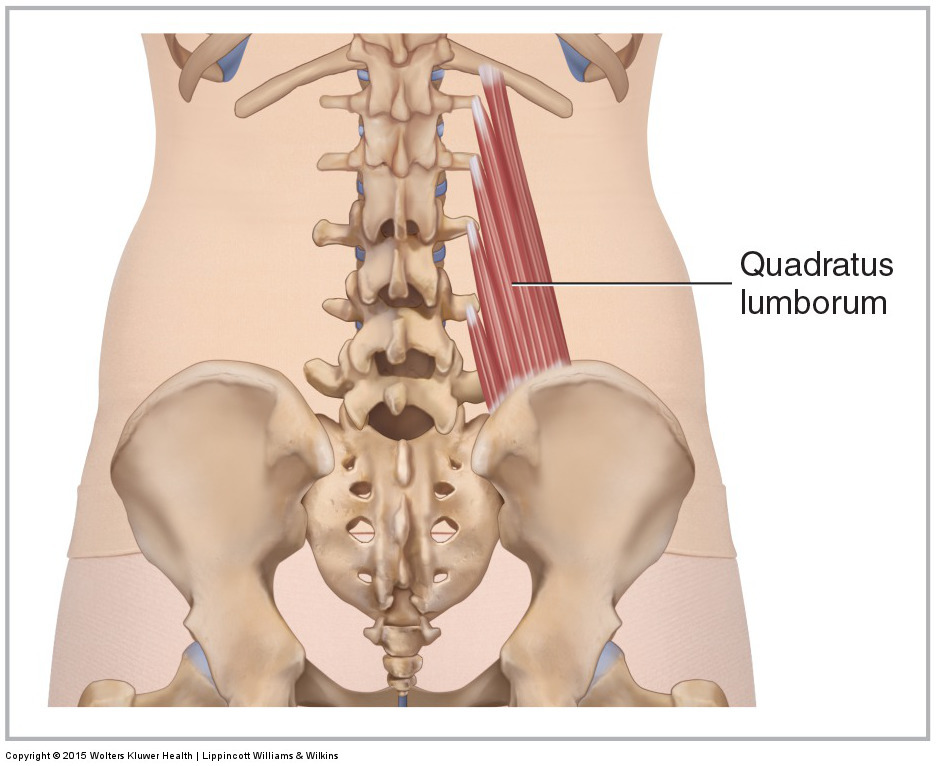
Figure 21. Posterior view of the right quadratus lumborum. Courtesy Joseph E. Muscolino. Manual Therapy for the Low Back and Pelvis – A Clinical Orthopedic Approach (2015).
Quadratus Lumborum
- The quadratus lumborum attaches from the inferomedial border of the 12th rib and the transverse processes of L1-L4 to the posteromedial iliac crest.
- The quadratus lumborum elevates the same-side pelvis and anteriorly tilts the pelvis at the lumbosacral joint and extends and laterally flexes the trunk at the spinal joints. It also depresses the 12th rib at the costovertebral joint.
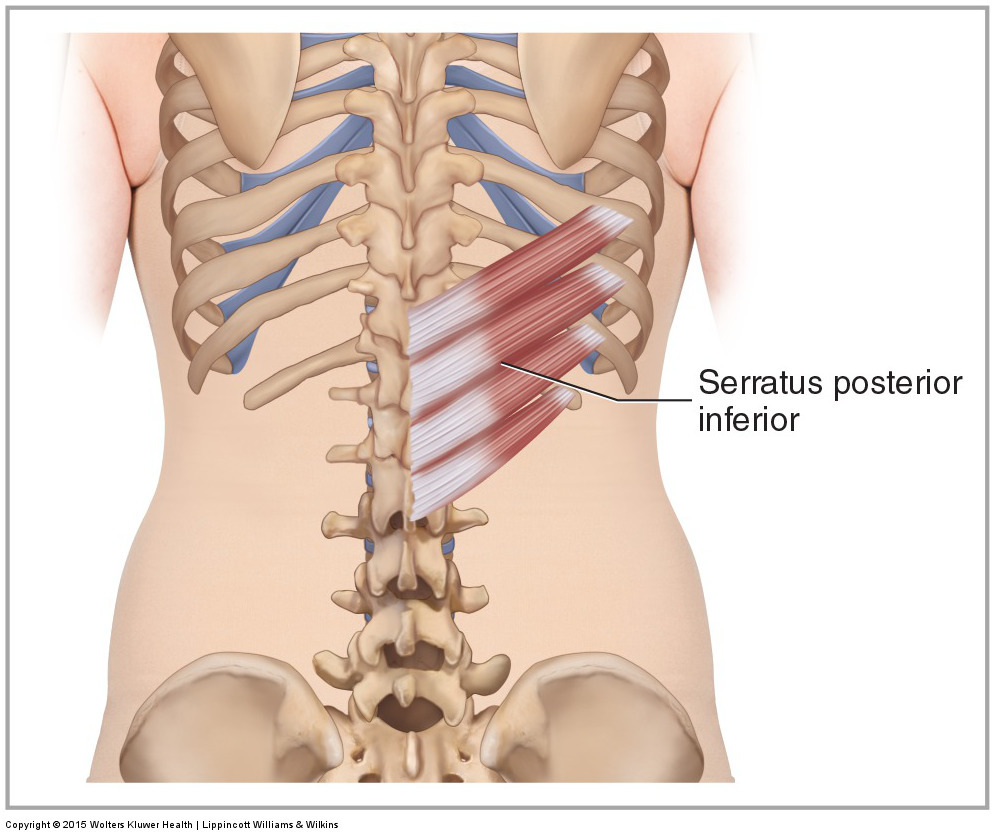
Figure 22. Posterior view of the right serratus posterior inferior. Courtesy Joseph E. Muscolino. Manual Therapy for the Low Back and Pelvis – A Clinical Orthopedic Approach (2015).
Serratus Posterior Inferior
- The serratus posterior inferior attaches from the spinous processes of T11-L2 to ribs 9 through 12.
- The serratus posterior inferior depresses ribs 9 through 12 at the sternocostal and costospinal joints.
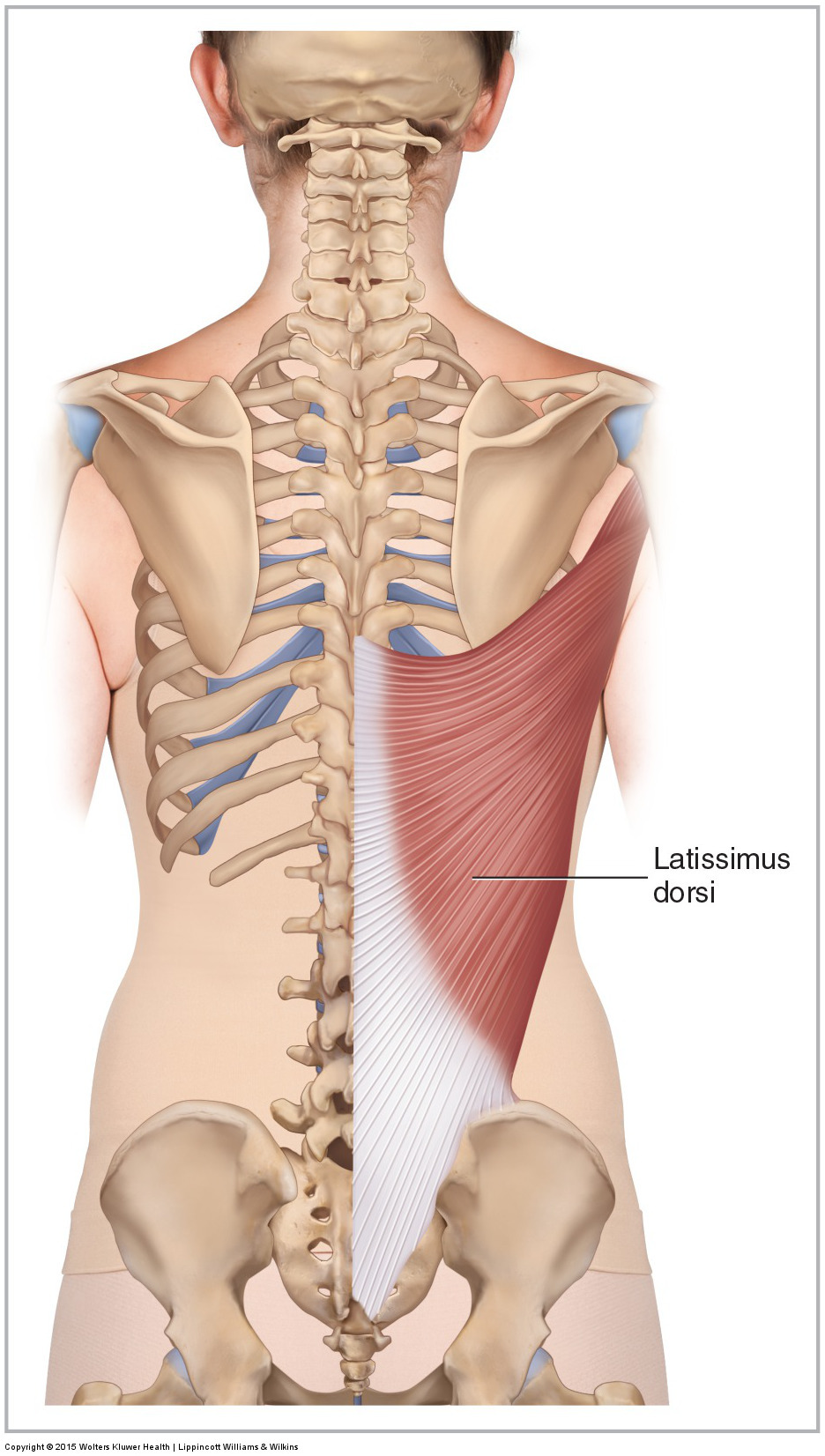
Figure 23. Posterior view of the right latissimus dorsi. Courtesy Joseph E. Muscolino. Manual Therapy for the Low Back and Pelvis – A Clinical Orthopedic Approach (2015).
Latissimus Dorsi
- The latissimus dorsi attaches from the spinous processes of T7-L5, the posterior sacrum, and the posterior iliac crest (via the thoracolumbar fascia) to the lowest three or four ribs and the inferior angle of the scapula to the medial lip of the bicipital groove of the humerus.
- The latissimus dorsi extends, medially rotates, and adducts the arm at the glenohumeral joint. It also anteriorly tilts the pelvis at the lumbosacral joint. Via its attachment to the scapula, it can also depress the scapula (shoulder girdle) at the scapulocostal joint.
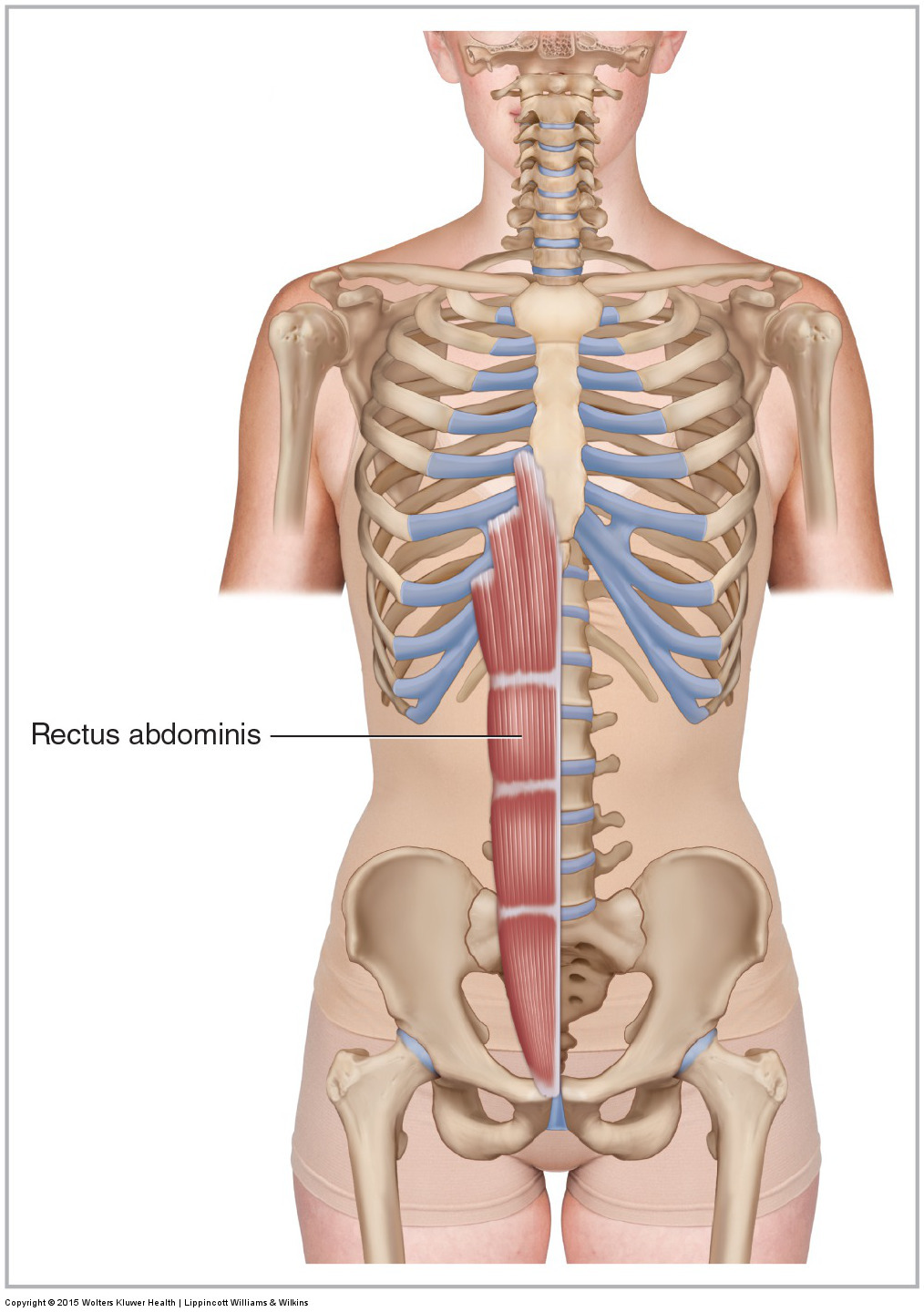
Figure 24. Anterior view of the right rectus abdominis. Courtesy Joseph E. Muscolino. Manual Therapy for the Low Back and Pelvis – A Clinical Orthopedic Approach (2015).
Rectus Abdominis
- The rectus abdominis attaches from the crest and symphysis of the pubic bone to the xiphoid process of the sternum and the costal cartilages of ribs 5 through 7.
- The rectus abdominis flexes and laterally flexes the trunk at the spinal joints and posteriorly tilts the pelvis at the lumbosacral joint. The rectus abdominis also compresses the abdominal contents.
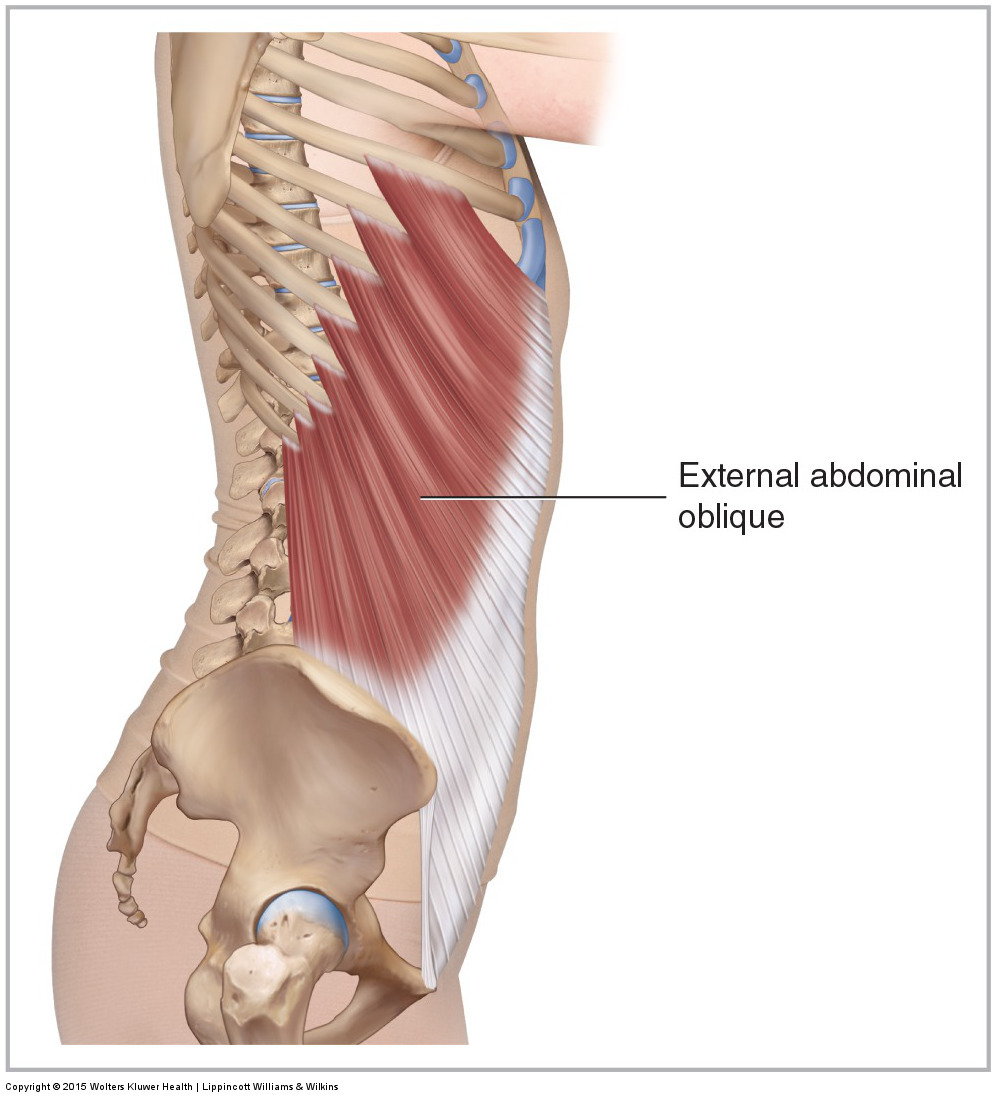
Figure 25. Lateral view of the right external abdominal oblique. Courtesy Joseph E. Muscolino. Manual Therapy for the Low Back and Pelvis – A Clinical Orthopedic Approach (2015).
External Abdominal Oblique
- The external abdominal oblique attaches from the abdominal aponeurosis, pubic bone, inguinal ligament, and the anterior iliac crest to the lower eight ribs.
- The external abdominal oblique flexes, laterally flexes, and contralaterally rotates the trunk at the spinal joints. It also posteriorly tilts and ipsilaterally rotates the pelvis and elevates the same-side pelvis at the lumbosacral joint. The external abdominal oblique also compresses the abdominal contents.
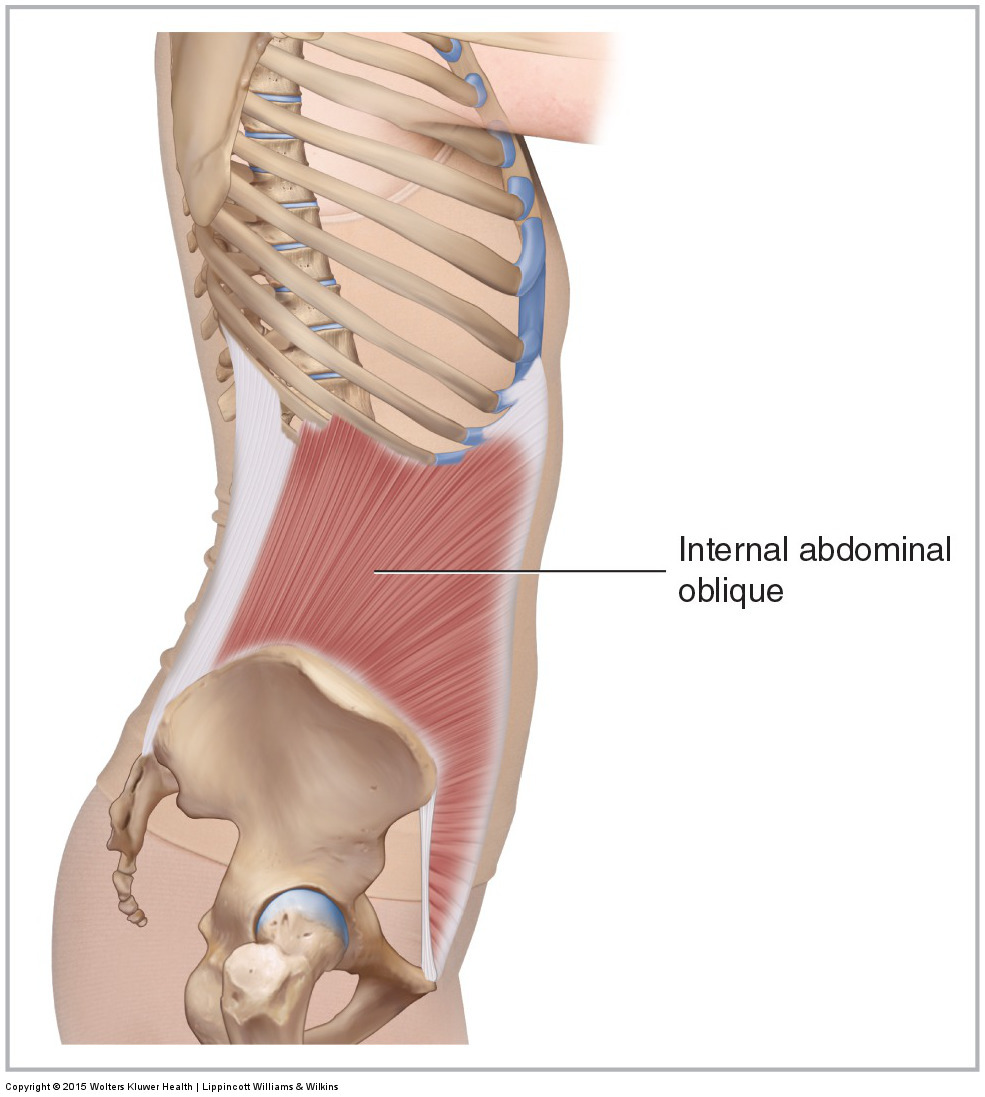
Figure 26. Lateral view of the right internal abdominal oblique. Courtesy Joseph E. Muscolino. Manual Therapy for the Low Back and Pelvis – A Clinical Orthopedic Approach (2015).
Internal Abdominal Oblique
- The internal abdominal oblique attaches from the inguinal ligament, iliac crest, and thoracolumbar fascia to the lower three ribs and the abdominal aponeurosis.
- The internal abdominal oblique flexes, laterally flexes, and ipsilaterally rotates the trunk at the spinal joints. It also posteriorly tilts and contralaterally rotates the pelvis and elevates the same-side pelvis at the lumbosacral joint. The internal abdominal oblique also compresses the abdominal contents.
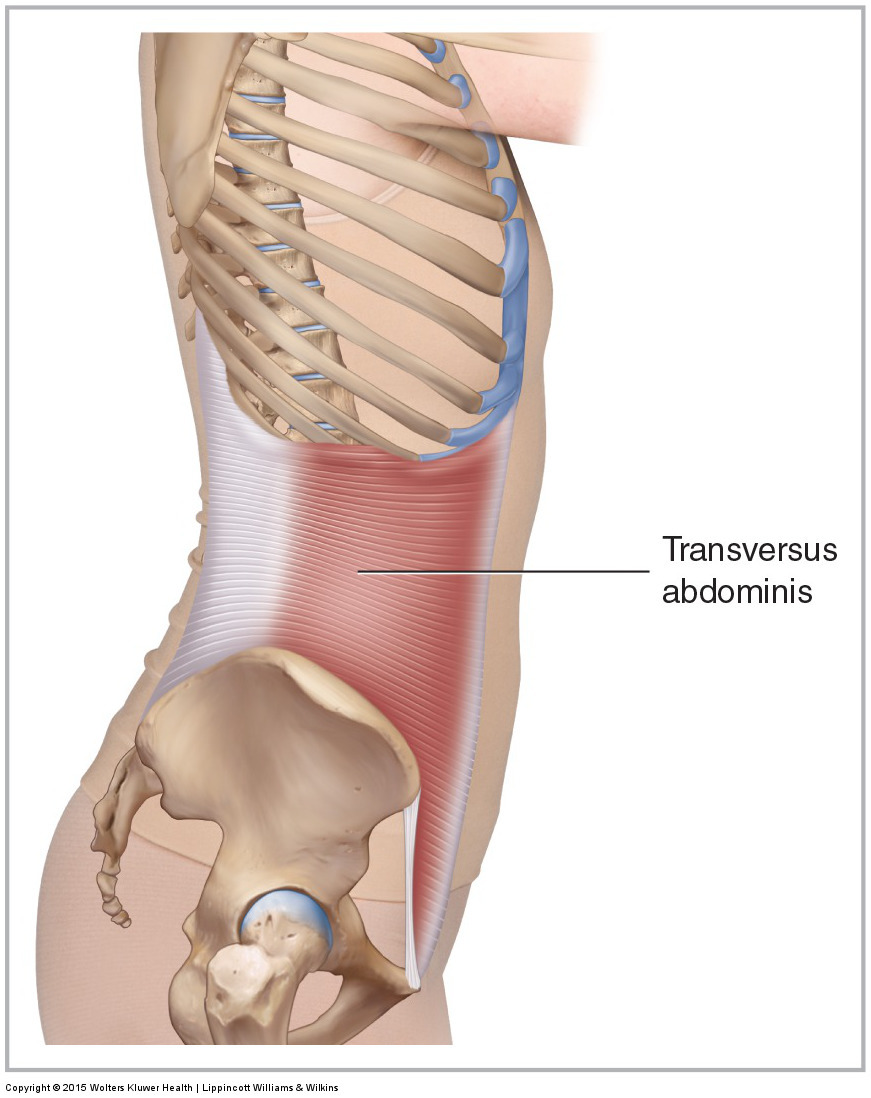
Figure 27. Lateral view of the right transversus abdominis. Courtesy Joseph E. Muscolino. Manual Therapy for the Low Back and Pelvis – A Clinical Orthopedic Approach (2015).
Transversus Abdominis
- The transversus abdominis attaches from the inguinal ligament, iliac crest, thoracolumbar fascia, and the costal cartilages of ribs 7 through 12 to the abdominal aponeurosis.
- The transversus abdominis compresses the abdominal contents.
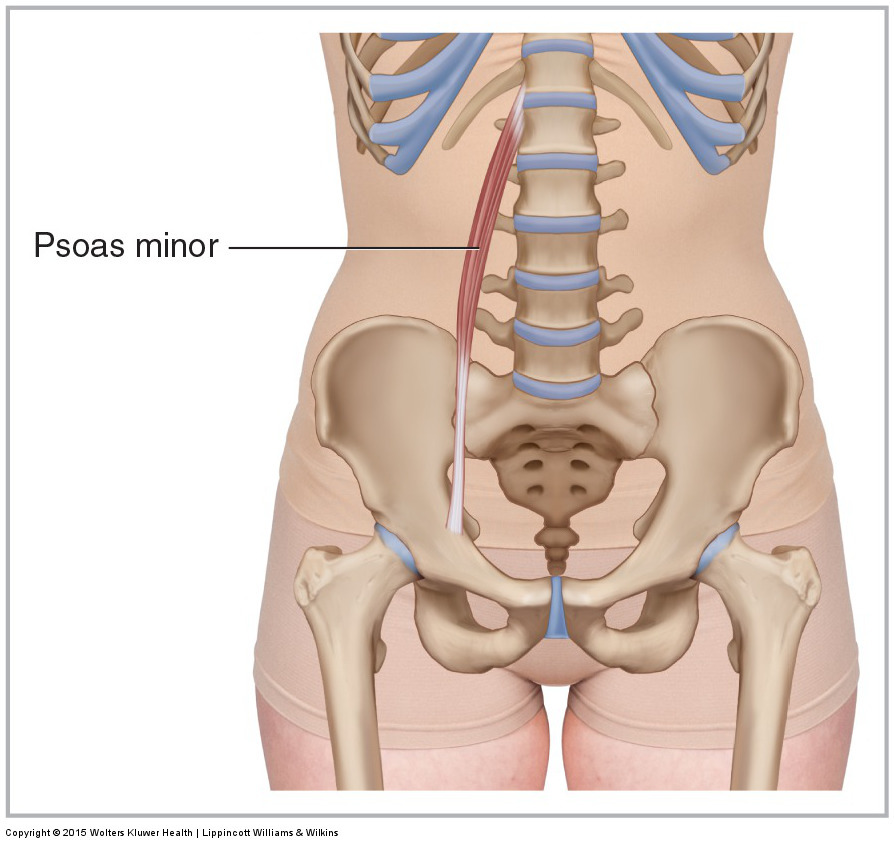
Figure 28. Anterior view of the right psoas minor. Courtesy Joseph E. Muscolino. Manual Therapy for the Low Back and Pelvis – A Clinical Orthopedic Approach (2015).
Psoas Minor
- The psoas minor attaches from the anterolateral bodies of T12 and L1 to the pelvic bone.
- The psoas minor flexes the trunk at the spinal joints and posteriorly tilts the pelvis at the lumbosacral joint.
Note: The iliopsoas is covered in The Muscles of the Pelvis blog post article of this series.
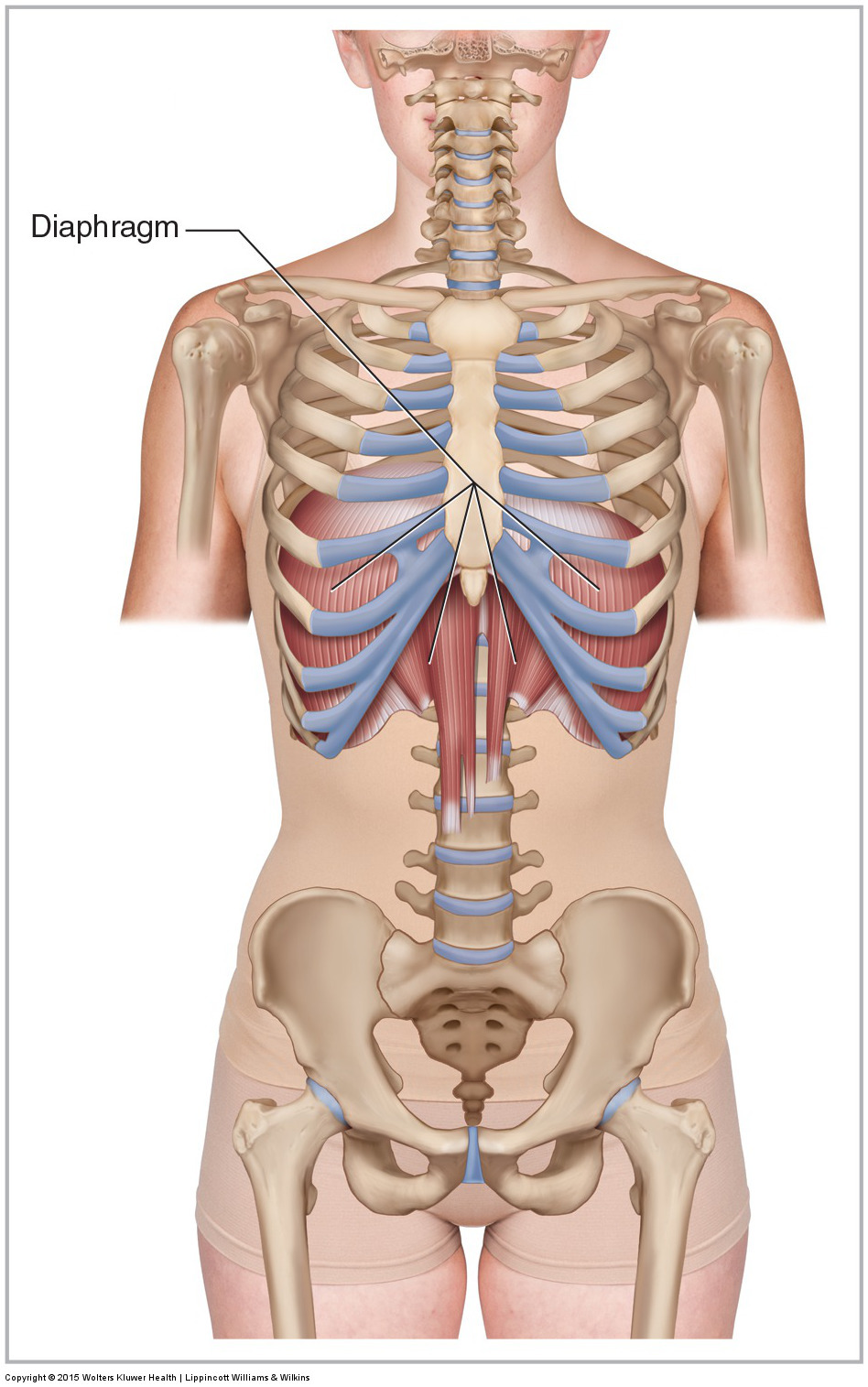
Figure 29. Anterior view of the diaphragm. Courtesy Joseph E. Muscolino. Manual Therapy for the Low Back and Pelvis – A Clinical Orthopedic Approach (2015).
Diaphragm
- The diaphragm attaches to the internal surfaces of the sternum, the lower six ribs and their costal cartilages, and L1-L3.
- The diaphragm increases the volume of the thoracic cavity by its central dome dropping down and/or by pulling the rib cage attachment up.
Note: This is the fifth in a series of 8 blog post articles on the anatomy and physiology of the lumbar spine and pelvis.
The blog post articles in this series are:
- Bones of the Lumbar Spine and Pelvis
- Joints of the Lumbar Spine (disc & facet) and Pelvis
- Motions of the Joints of the Lumbar Spine
- Motions of the Joints of the Pelvis
- Muscles of the Lumbar Spine
- Muscles of the Pelvis
- Ligaments of the Lumbar Spine and Pelvis
- Precautions for Manual Therapy of the Lumbar Spine and Pelvis


